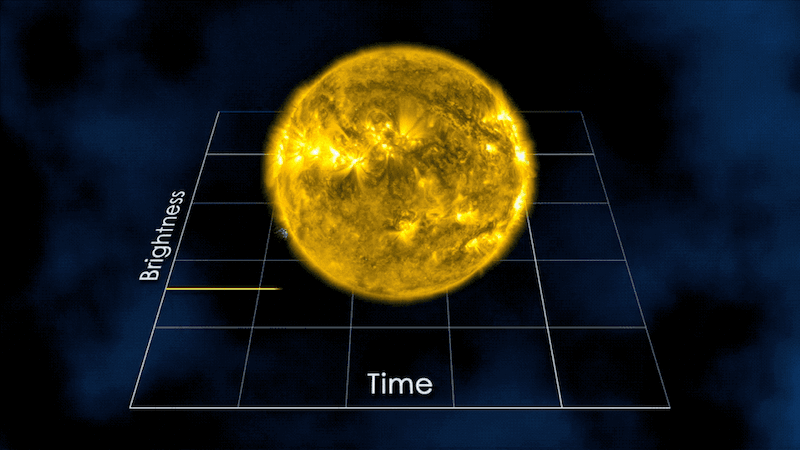Kepler uses the transit method to detect exoplanets. When a planet passes in front of its star, from our vantage point it causes a small dip in the star’s brightness that scientists can measure to obtain more data.Image via Goddard Space Flight Center/ JPL-Caltech.
